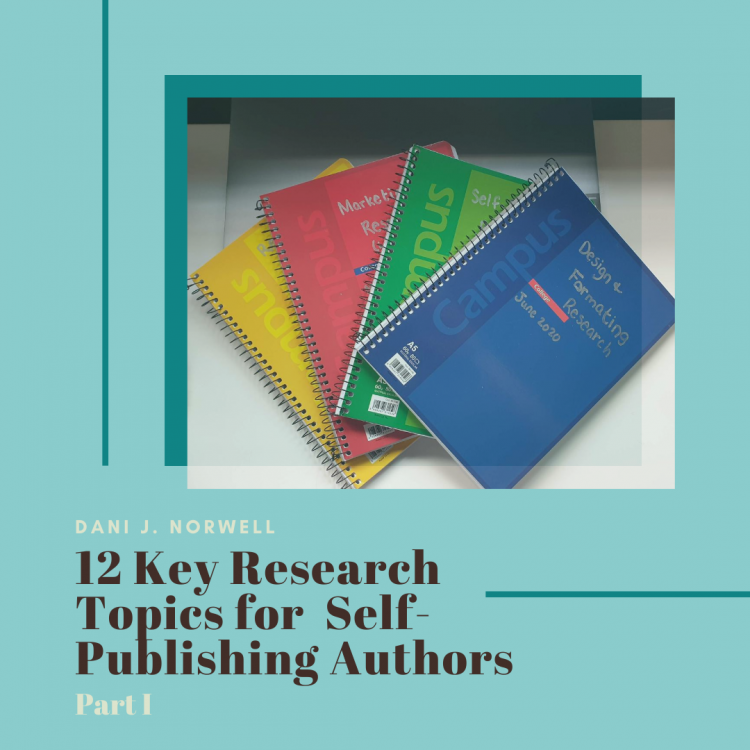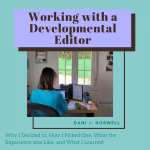What I Researched and You Should Too
I mentioned in my Lessons Learned post that researching is important and necessary, but it should be targeted and organized. If you are just starting out on this writing journey, chances are that you agree with the sentiment but might now know exactly what you should focus on nor how to go about that. I promise you, I didn’t know when I started either. As a result, I spent two full weeks bouncing around from blog post to blog post, from video to video, inundating my brain with copious amounts of information. I could tell it was all useful, I just couldn’t keep any of it straight so it wasn’t proving useful to me.
Finally, I decided to go back through my notes and break the information down into categories. Whatever topics I saw popping up often—but that I didn’t feel well-versed in—made the list. I believe I started with ten categories and the list grew a bit as I continued to investigate.
While the topics I researched might not be the exact same ones you need to research, let me lay out the details of how I chose to target my research on self-publishing and other first-time author topics anyway. I have combined a few of the topics I originally looked at for the sake of conciseness and included links to particularly useful resources. I’m sure it will help give you a bit more direction too!
1.) Editing:
When I got to the editing stage of my process, I realized that this was an art I was not inherently talented in. One glance at Reedsy’s Types of Editing post and I was overwhelmed—there are literally different names for different kinds of edits? It turns out, there are! What’s worse is that I was mixing line editing with developmental editing with proofreading and apparently this is a no-no in the professional world. Oops!
In this category I also included tangential topics that I felt would improve my manuscript now that I was in the editing phase. Among these were how to start a story, different points of view / narrations styles, how to write realistic dialogue, and character motivation.
Note: I realized how much I needed to focus on this topic after attending a Reedsy Live on Novel Revision. When I attended, I got to watch it live and post questions to the speakers (who, that time were two authors named Gina Sorell and Caroline Leavitt). However, you can find loads of these recorded events on Reedsy’s YouTube channel.
2.) Author Page / Bio:
Time and time again, I came across mention of how important your Author Central Page (on Amazon) and similar biographical blurbs can be so I decided I ought to dedicate some time to figuring out how to do it right. I still don’t know that I did an amazing job with my first one, but at least I avoided the most common pitfalls of first-timers such as mentioning that I’ve been interested in writing since I was a kid and/or writing the bio in first person.
Also, after doing a bit a research through posts like this and this, I felt more confident about how I wanted to adjust my biography for posting it in different places. For example, I developed a very brief version for websites with character-limits like Reedsy Discovery, a longer version for my website and Author Central Page (read about how to do it well here), and an intermediate version for my book’s back cover.
3.) Book Description, Categories, and Keywords:
Another highly important topic was how I would decide to describe my book and what categories and keywords I would file it under. Next to choosing my author name, this was one of the most difficult tasks for me when publishing my first book. Scribe provided a very helpful article on the topic of book descriptions (written by none other than Tucker Max himself). I found the same advice, more or less, everywhere else I looked too.
Kindlepreneur had plenty of information about choosing your keywords and categories. At first, I was slightly annoyed that each article included a call-to-action to purchase their KDP Publisher Rocket. With time, I decided this was actually an excellent tool for me to consider because, as a first time self-publishing author, I didn’t know much about competitive categories or keywords for my genre. Deciding to invest in the product ($97) for something I can use on every book going forward actually allowed me to cut down on my research on this topic with confidence.
4.) Book Cover Design and Formatting:
I’ll be honest, this topic really intimidated me! There are plenty of people out there who will tell you that you can do this all on your own and there are plenty more who will tell you that it is painfully apparent which authors have designed their own covers and this should therefore be avoided at all costs.
After reading the Kindlestation article that includes a link to “Kindle Cover Disasters” in the first line I was petrified that designing my own cover would land me on that list. (I was even more anxious once I visited the site and realized that I didn’t see what made half of the covers so disastrous. Oh my god, what if I have no eye for this kind of thing!?)
In the end, actually delving into the research of this category put my nerves at ease. I was comforted by this David Gaughran article about creating your cover for free on Canva, a platform I was already familiar with. For anyone freaking out about the formatting side, I urge you to check out KDP’s guidelines first if that’s where you’ll be publishing—I originally read a lot of contrary information but, personally, found that it was really painless to convert my Word document to their format through the Kindle Create software.
5.) Self-Publishing on Kindle:
That brings us to the topic of self-publishing and, specifically, where you plan to do so. In my initial two weeks, I had already read enough about self-publishing to know I wanted to use Amazon’s Kindle Direct Publishing (KDP) and no other marketplaces to release my first book. For my purposes, it made the most sense to opt for KDP Select (an exclusivity program), but it may not be the right choice for you. Start to read up on that here and here if you’re still deciding.
After I had made this decision, my research was focused on content guidelines / metadata, Amazon algorithms, pricing and royalty schemes, and whether or not it made sense to offer a paperback version of my book. One thing that I did not come across in my research but later proved frustrating to me was that (at least now, in 2020), unless you do a pre-order—which is only available for e-books—it is impossible to choose the date your book goes live on Amazon. Would it be useful for me to write a post about how I handled this? Let me know below!
6.) Book Reviews:
Wouldn’t it be wonderful to release your book with the reassurance that you have a number of positive reviews already lined up? Of course it would be! Every blog was telling me how important book reviews are, but I didn’t know how to get them. Fortunately, there’s a lot of information out there. Not only is it possible for authors to distribute advanced reader copies (ARCs) to anyone they’d like but there is actually a pretty large market of book bloggers and book reviewers out there to solicit!
I learned a lot about why book reviews mattered as well as found a long list of book bloggers to contact from this one resource. Unfortunately, I did not even receive a response from the five book bloggers I reached out to (which was disheartening), but I did feel confident that I had queried them professionally (really reading through their site to understand their interests and if they would be a good fit, following all of their review request rules, and following up just once).
On the other hand, I was able to distribute ARCs to a few of my friends and get them to read and review the book before it was officially released. Because I followed all the tips and tricks explained in this podcast before doing so, all but one of my friends were able to leave me a legitimate review (that Amazon accepted)! I also now recognize how valuable Instagram can be in this domain.
Now that I’ve spent a decent amount of time building a presence there, I realize that the #bookstagram community is strong and welcoming—a fact I imagine I can lean on with my second book, reaching out to people I have already developed a virtual relationship with. But more about that in Part II.
This list has quickly gotten lengthy and so I will be breaking it into two posts. Be sure to check out Part II in which I dive into the next six topics of importance, what I learned about them, and where you can start your research too!


4 thoughts on “12 Key Research Topics For Self-Publishing Authors (Part I)”